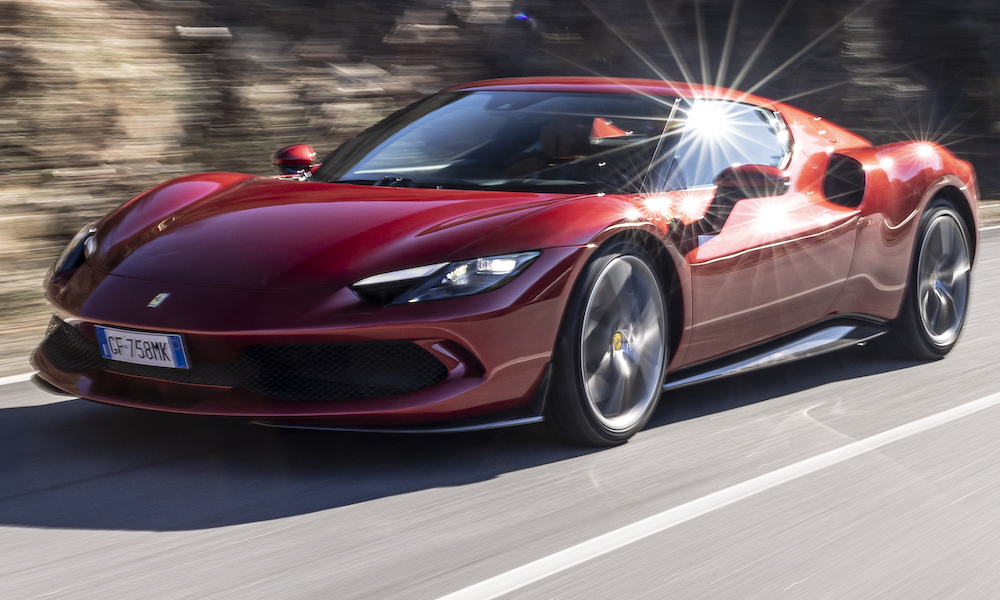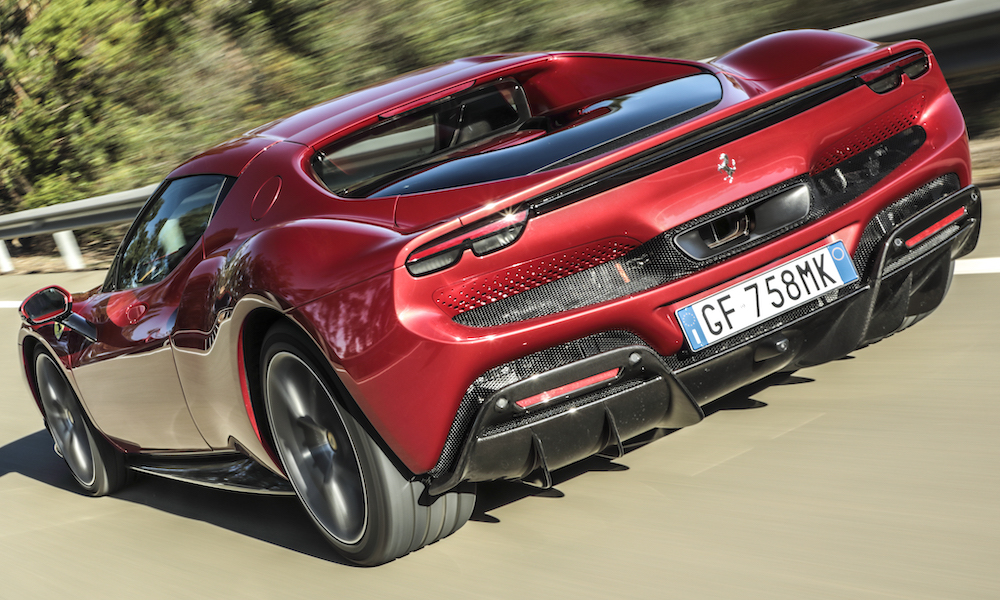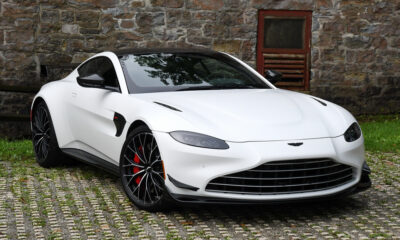Ferrari will open a new chapter in its motorsport story next year when the 296 comes in to replace the venerable and decorated 488 as the Italian manufacturer’s GT3 product.
Management figures from Maranello’s Attivita Sportive GT department have been open about the pressure placed on them by the outgoing model, which is set to bow out as the most successful Ferrari competition vehicle to date with more than 500 wins.
Fortunately for them, the Ferrari 296 GT3 derives from a competent road-going forebear that exudes stability and offers stellar outright performance to those who can extract it.
The 296 GTB is Ferrari’s first V6-powered sports car outside of the Dino series and its second plug-in hybrid offering. With a sleek exterior design consisting of classical lines drawn in new ways, it has the impression of becoming another company landmark.
Of course, the best way to validate that impression is to drive it. And what better location than the car’s home country: the winding backroads near Imola circuit?
Our tour through the hills of Emilia-Romagna starts on electric power from the Imola base camp. The journey is a steady climb on marked roads into the hills that demarcate Emilia-Romagna from Tuscany, heading southwest in the rough direction of Mugello.
But instead of descending to the regional border, we turn west and navigate through ribbons of narrower tarmac, past vistas of craggy peaks and back down towards the fertile plain. It is glorious territory for handling a Ferrari.
Despite its enormous power (peaking at 818 hp), the Ferrari 296 GTB is not an intimidating car to sit in. The interior resembles a grand tourer experience, with tanned breaks in the black paneling alleviating some of the rigidity you feel in pure-bred supercars like the Lamborghini Huracan and McLaren 720S.
Starting on electric power adds to the serenity, but the feeling continues even when the 2992cc twin-turbo V6 engine introduces itself at around 30 mph. There is no judder; no indication that the power application method has transferred. It just calmly enters a realm that can provide the most extreme levels of pace and cornering if demanded.
Even as speeds increase along the winding country lanes, the car feels planted and ready to accept more input. That doesn’t mean that it’s a boring ride, though. The 296 GTB punches out of turns confidently and holds firm down the bumpy straighter sections.
There is plenty of vision out of the windscreen, while the rear-mounted glass panel behind the cockpit gives a nice window to the rear so you can feel even closer to the sonorous engine and the active rear spoiler.
Some interior elements impact the comfort of the ride, most notably the steering wheel-mounted indicator stalks that are often obstructed by turning. Also, the small gap between pedals is awkward for long journeys but would pose no issues on a short drive.
In general, the 296 GTB offers a rich driving experience through its different sources of power. Whether that’s the 2.8 seconds it takes to reach 60 mph or its ability to calmly negotiate tight hairpin switchbacks and elevation changes, there are many ways in which the driver can relish their time behind the wheel.
The Ferrari 296 GTB’s engine is linked to a 165-horsepower electric motor that had to be removed from the racing version to comply with the FIA’s GT3 regulations.
This is the main technological difference between the GTB and the GT3, although Ferrari’s engineers applied other modifications to develop a car that has the capability to emulate the 488’s glittering motorsport achievements.
“We started, by regulation, with the 120-degree engine from the road car,” explains Ferrari’s sports car racing technical director Ferdinand Cannizzo.
“We did a lot of work to reduce the weight of the road car version [from 1,470 kg to 1,250 kg].
“We designed the internals to cope with the racing mission. The engine is similar, with changes done to grow the performance. The turbo inside the V enables very compact packaging.
“The alternator has moved to the rear [for] optimal weight distribution and this will guarantee easy accessibility to components for any operations mechanics would like to do.”
Ease of access was an important aim for Ferrari’s engineers when they turned the 296 GTB into a racing animal. The modular design using large components has been covered before, but it’s worth reiterating as it makes the car significantly easier to assemble.
That is good news for build partner ORECA considering it has a huge number of initial orders to fulfill, and also for customer teams because it contributes to keeping the running costs down. Furthermore, Ferrari’s technical chief says it has increased the engine mileage from around 10,000 km on the 488 GT3 to approximately 12,000 km on the 296 GT3.
“We have simplified the build of materials,” says Cannizzo, who also led the design team for the 499P prototype that will enter the FIA World Endurance Championship next year.
“There are less parts to fit. You can see a car which is very simple.”
Elsewhere, the suspension of the GT3 car is double-wishbone front and rear as opposed to the road car’s configuration of double-wishbone on the front and multi-link at the back. The wheelbase has been enlarged by 60 mm to improve braking stability and tire degradation, while two distinct exhaust outlets replace the singular exit point of the GTB.
Of course, there are also various eye-catching aerodynamic transformations, headlined by the swan-neck rear wing which is starting to appear on more GT3 cars.
All of that has been a lot of work and required extensive testing, however the ethos of the 296 hasn’t changed in the road-to-race conversion. It is still a compact machine, even without the e-motor, and has been made as efficient as possible in functional terms.
The GTB is a pleasure to drive and extremely stable, but is also a worthy adversary to similar cars from other manufacturers in the performance stakes. Ferrari will be eager to ensure that these characteristics translate directly into the GT3 version.
After racking up so much success with the 488, Ferrari is entering a new phase of its racing journey with a GT3 car based on a road-going model that is perfectly poised to keep the momentum going.






























